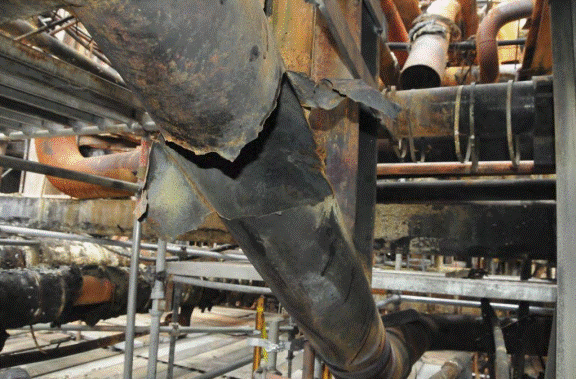Click here for the Final Report. There are few new surprises. The report concludes that
- Rupture of the 8-inch 4-sidecut resulted from wall thinning caused by sulfidation corrosion.
- Post rupture corrosion destroyed fracture morphology that could have indicated the rupture initiation site. However, rupture likely originated in the thinnest region and initially followed a longitudinal path driven by the hoop stress. Consequently, an area of likely rupture initiation was identified.
- The wall thickness of the ruptured section was less than all the other sections of the 8-inch 4-sidecut that were evaluated.
- Chemical analysis showed the silicon concentration of the ruptured section was 0.01-wt%.
- Six of twelve specimens (50%) from unique sections of the 8-inch 4-sidecut, 12-inch 4-sidecut, and 2011 12-inch samples were found by chemical analysis to have a silicon concentration of less than 0.1-wt%.
- Deformation of a small region of the 8-inch 4-sidecut rupture edge was consistent with mechanical force applied from the outside surface of the pipe, possibly from a fire pike, such as samples E-099 and E-082-2, or other pointed object. This deformed region was located within the area of likely rupture initiation.
The ruptured pipe apparently dates from the original construction of the unit in the 1970s, and based on the sampling and analysis, the low silicon concentration of the carbon steel extended hundreds of feet beyond the section that actually failed. The failure may have been exacerbated by the application of a “fire pike” during the initial response to the leak.

|

